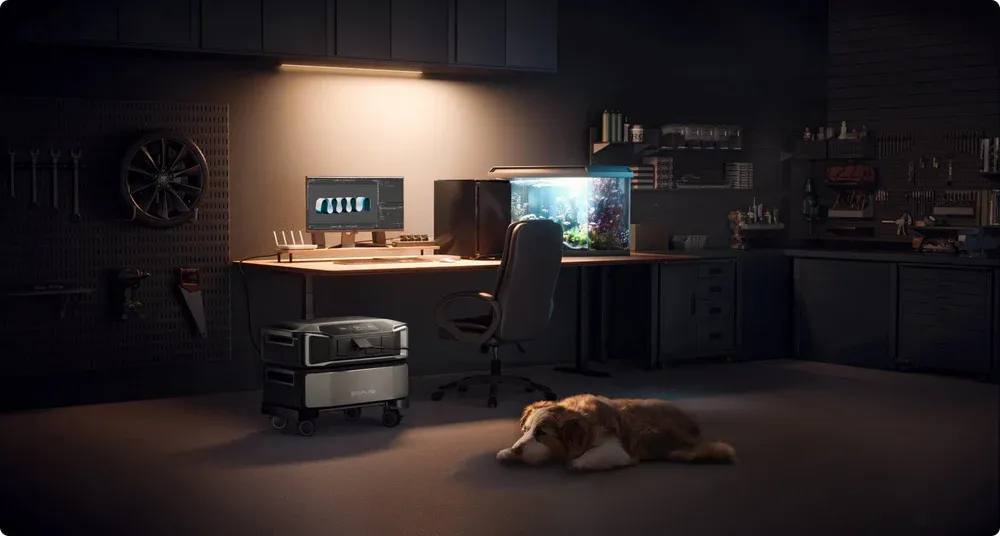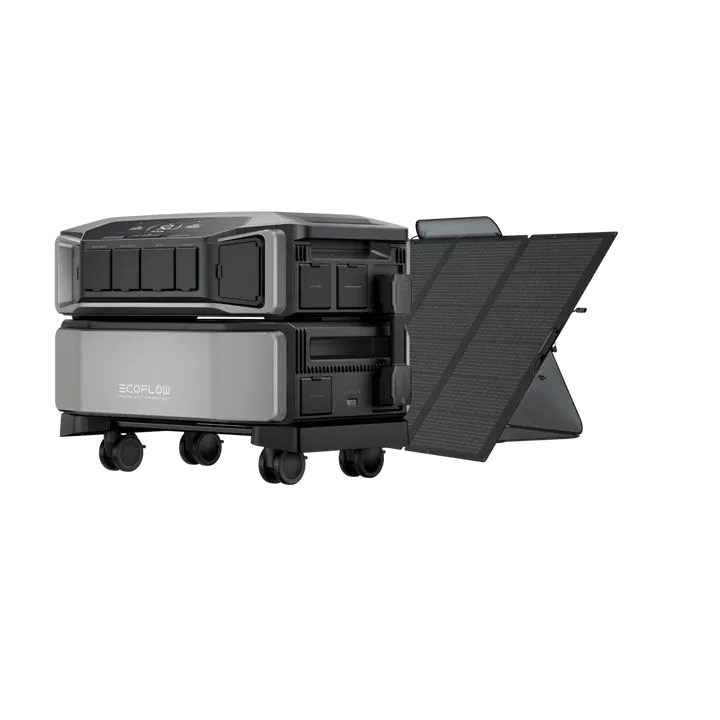- Why Choosing the Wrong Size Generator Can Leave Your House in the Dark
- What Happens When a Backup Generator Lacks Enough Battery Storage?
- Don’t Overlook the Benefits of a Solar Generator with Smart Features
- Can You Safely Connect Your Backup Generator Without a Smart Panel?
- Why Location Matters: Placing Your Generator the Wrong Way Can Be Risky
- Is Your Generator Ready When You Need It? Many Are Not.
- Conclusion: Smart Backup Power Starts With Smarter Use
- FAQs: The Smart Details That Help You Avoid Mistakes
Common Mistakes to Avoid When Using a Backup Generator for Home
- Why Choosing the Wrong Size Generator Can Leave Your House in the Dark
- What Happens When a Backup Generator Lacks Enough Battery Storage?
- Don’t Overlook the Benefits of a Solar Generator with Smart Features
- Can You Safely Connect Your Backup Generator Without a Smart Panel?
- Why Location Matters: Placing Your Generator the Wrong Way Can Be Risky
- Is Your Generator Ready When You Need It? Many Are Not.
- Conclusion: Smart Backup Power Starts With Smarter Use
- FAQs: The Smart Details That Help You Avoid Mistakes
Picture this: a thunderstorm rolls through your neighborhood. In minutes, the grid goes down. Your lights flicker out, your fridge clicks off, and the house falls silent. Meanwhile, your neighbor’s home is still glowing—TV humming, freezer humming, even coffee brewing.
The difference? A smart backup generator—and knowing how to use it correctly.
Many homeowners think that once the generator is installed, the job is done. But the real problems start after installation. A backup generator for home only protects your family if it's sized, placed, and managed correctly. This guide covers the most common mistakes and how to avoid them. If you're looking for the best house generator or already use a solar generator, this is for you.
Why Choosing the Wrong Size Generator Can Leave Your House in the Dark
One of the most common mistakes is buying a generator without understanding your home’s actual power demands. It’s easy to look at a few appliances and guess, but those guesses usually fall short.
Some devices, like HVAC systems or well pumps, use far more power to start than to run. For example, an air conditioner might draw 2,000 watts while running but require over 4,000 watts to turn on.
People also miss little stuff. They forget about lights, routers, or even their EV charger.
Some assume that if a generator powers one thing, it can handle everything else too. That’s rarely true. Energy use adds up. And if you don’t plan for appliances to turn on at the same time, the system can overload.
To properly size your backup generator for your home, you need to know two things:
- Peak wattage: the highest load when devices start up
- Daily energy needs: how many watt-hours you use over time
Without these numbers, your system may trip breakers or shut down unexpectedly. And that’s the last thing you want during a storm.


What Happens When a Backup Generator Lacks Enough Battery Storage?
Power isn’t just about strength—it’s about stamina. Some systems deliver plenty of watts but only for a short time. That’s a real issue during long outages.
Imagine this: You’ve got a powerful solar generator, but it only stores 2kWh. That means you can run a fridge and some lights, but only for a few hours. Then what?
Battery storage matters just as much as output. Yet many homeowners forget to ask how long their generator will last under load.
Here’s what can happen:
- A system runs your devices but drains within two hours
- You try to recharge it overnight, but there’s no sunlight
- The next morning, your fridge is off, and your food is spoiling
To avoid this, look at battery capacity (measured in kilowatt-hours) and consider how much energy you actually use per day. A larger battery can make the difference between weathering a blackout or going back to square one.
Don’t Overlook the Benefits of a Solar Generator with Smart Features
Most power outages don’t last 10 minutes. They last hours or days. A solar generator that can recharge during daylight becomes a self-sustaining system. One model built exactly for this kind of performance is the EcoFlow DELTA Pro Ultra.
This isn’t just a battery box. It’s an expandable, smart-managed backup solution for serious home use. Here’s what makes it stand out:
Starts strong, grows bigger: Begins at 6kWh, expandable to 90kWh. That’s days of power for most homes.
No compromise on power: Delivers 7.2kW per unit. Three units provide 21.6kW—enough for HVAC, laundry, cooking, and more, all at once.
Recharges itself: Accepts up to 16.8kW of solar input. Power flows in even while your lights stay on.
Always-on capability: Works with EcoFlow’s Smart Home Panel to switch in <20ms. You won’t even notice the outage.
Quiet and clean: No fuel, no fumes, no roaring noise. Install it indoors or out—it’s built for either.
Imagine this: you’re running a heat pump, two refrigerators, and charging your EV. Most systems struggle—or fail. DELTA Pro Ultra runs them smoothly, then refuels itself through solar while you sleep. It doesn’t just back you up. It carries you through.
Can You Safely Connect Your Backup Generator Without a Smart Panel?
Some homeowners try to get clever with manual switches or unsafe plug-ins. That’s a recipe for disaster.
Without a proper transfer switch or smart panel, your generator might back-feed power into the grid. That’s dangerous for utility workers. Worse, it can cause uneven power across your home, damaging sensitive devices.
Unsafe setups often include:
- Plugging generators into wall outlets
- Manually flipping breakers during outages
- Skipping surge protection
To use a backup generator for home safely, install a certified transfer switch or, better yet, a smart panel that handles the handoff automatically. You can select which circuits stay on and which don’t, giving you full control and peace of mind.
Why Location Matters: Placing Your Generator the Wrong Way Can Be Risky
Where you install your generator impacts safety and performance. Too many homeowners stash systems in basements, closets, or garages without thinking about airflow or moisture.
Key location mistakes include:
- Putting battery systems near hot water tanks or furnaces
- Placing them on damp concrete or unsealed floors
- Blocking air vents with boxes or shelves
Heat and humidity degrade battery life. Lack of airflow can trigger thermal cutoffs. Even the best house generator needs a clean, dry space with stable temperatures and enough room for cooling.
Before choosing a spot, check the unit’s ventilation needs. If it’s solar-compatible, make sure sunlight reaches the panels without blockage.


Is Your Generator Ready When You Need It? Many Are Not.
A backup generator is only useful if it actually works when the power goes out. Sadly, too many don’t—simply because no one maintained them.
These are the top things people forget:
- Recharge batteries every 3–4 months
- Run a full load test at least once per season
- Check the app (if available) for error codes or firmware updates
- Clean out dust or moisture in storage areas
For solar generator users, don’t forget to test solar charging even on cloudy days. Panels can degrade or disconnect over time. It’s better to find out during a test than in the middle of a blackout.
Maintenance doesn’t take long. Put it on your calendar and treat it like your smoke alarm check. Your future self will thank you.
Conclusion: Smart Backup Power Starts With Smarter Use
Backup power isn’t just about buying the right machine. It’s about using it wisely. That means:
- Planning your energy needs
- Installing smart controls
- Testing often
- Avoiding unsafe setups
Systems like the EcoFlow DELTA Pro Ultra offer a modern way to power your home—quiet, scalable, and ready for both solar and grid failure. But even the most advanced generator won’t help if used incorrectly.
So ask yourself: Are you ready for the next blackout? Or just hoping things work out?
If you want a system that works the way your home actually lives, it’s time to rethink backup power—one smart choice at a time.
FAQs: The Smart Details That Help You Avoid Mistakes
Q1. Will a backup generator power electric cooking appliances like ovens and induction ranges?
Yes, provided your generator contains enough continuous wattage. Electric ovens and induction ranges draw 2,000 to 5,000 watts of power, and more for preheat or start-up cycles. If your generator is small or shared among multiple pieces of equipment, it will trip or shut off. For homes where electric cooking is done during emergencies, you must factor in the overall load and consider a high-output generator with 240V split-phase output capability. Some advanced systems, including expandable battery designs, are suited for these larger residential loads.
Q2. What happens if I unknowingly overload my battery backup generator?
Most newer generators incorporate internal protection that shuts off output when an overload is detected, yet it remains risky. Overloading can trigger automatic shut-offs, cause voltage drops, or even reduce lithium battery long-term health. You probably aren't even aware, but sensitive gear like routers and computers can suffer intermittent failure. That's why it is so crucial to plan for peak demand—not normal usage—especially in the case of emergencies. Intelligent load prioritization and real-time monitoring can prevent this from ever happening.
Q3. How do I know that my home electrical panel will be compatible with a backup generator system?
You will have to check if there is any space available in your breaker panel and whether it has generator-ready circuits. Older panels may lack space for interlock kits or smart home panels and may require a professional upgrade. Compatibility depends on whether your system is single-phase or split-phase, especially for North American homes. If uncertain, consult with a qualified electrician or look for generators with flexible integration with both old and new panels. Certain high-end backup systems include modular panels for this purpose.
Q4. Can I use my backup generator during peak grid demand times to reduce utility bills?
Yes, if your generator supports time-of-use (TOU) control or grid-interactive control. Some newer battery generators allow homeowners to save electricity off-peak and use it during peak utility rates. This not only saves electricity bills but also stabilizes the grid. However, this is dependent upon utility approval and an energy management system that's up to the task. Not all backup generators offer this capability, but newer whole-home-integration-focused models are more likely to include it in their energy automation package..
Q5. How do I estimate the number of runtime hours that I will achieve with a given battery size?
To calculate runtime, divide your battery's usable energy capacity (in kilowatt-hours) by its total load (in kilowatts). Thus, a 10kWh battery supplying 2kW will run for approximately 5 hours. Be aware that battery systems often have depth-of-discharge limitations, so a 10kWh system might only be able to draw 8kWh usable to preserve battery life. Temperature, inverter efficiency, and real-time surges could also influence actual performance. The ideal method is to pattern your usage off a test period and track the consumption with the system's onboard monitoring software.